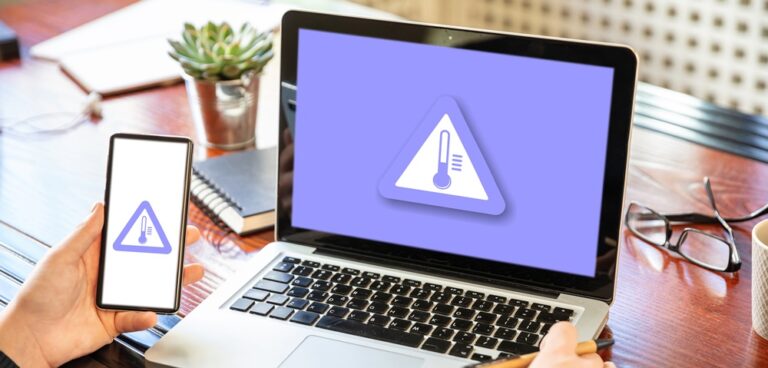IT support staff have been inundated with calls from businesses and individuals who have seen their laptops, servers and other devices reach critical temperatures as a result of the heatwave.
Technology services provider, Probrand, has seen an influx of calls to its service desk in the last 24 hours, with people recording critically high temperatures and servers reaching in excess of 42 degrees, as offices and data centres struggle to cope with the conditions. They are now sharing practical tips on how to guard against overheating. With many workplaces advising staff to work from home, there is an added risk of employees taking their laptops outside and exposing them to direct sunlight, which could cause irreparable damage to devices.
Eugene Muller, technical manager at Probrand commented: “We have seen a huge spike in enquiries to our service desk this week, with businesses seeing the impact of the extraordinary temperatures on their IT equipment. With the potential for the heat to rise even further, it is vital that employees and businesses take extra precautions.”
“The disruption caused by malfunctioning IT can have a huge financial impact on businesses, but the following tips can help keep these risks to a minimum.”
- Keep laptops out of direct sunlight: As the temperatures rise it can be tempting to work outside from a garden or balcony. But exposing your laptop to direct sunlight for extended periods can cause the equipment to overheat and malfunction. Try to remain indoors in a cool spot if possible, and if you must go outside, make sure your laptop is completely in the shade. If your laptop starts to show signs of overheating – such as the fan becoming increasingly noisy – take it to a cooler spot as soon as possible
- Avoid any moisture: It might sound obvious, but IT equipment should never be exposed to moisture. Many people are keeping themselves cool by using water sprays, misters and improvised air conditioning solutions, but it is essential that you keep any laptops and devices out of the path of any moisture
- Ventilate server rooms if there is no air conditioning: Servers generate heat even in cool conditions, so they are particularly at risk of overheating when the temperature rises inside the building. Make sure there is adequate ventilation where your server is stored and bring in extra fans if possible. Don’t be tempted to move your servers to another part of the building unless you have an expert who is fully trained in how to do so safely
- Reduce excess stress: Dealing with heat places excess strain on your IT equipment, so removing any other stress can free up your equipment to cope with this. Closing unused applications that place demand on your servers or processors is one way to keep your devices operating smoothly
- Shut down at night: Provided it is safe to do so, shut down laptops and devices fully at the end of the day, rather than leaving them on standby. Place your laptop in the coolest part of the home or office overnight before rebooting it in the morning
- Seek expert advice: If you do notice a problem with your IT equipment, don’t be tempted to try and fix it yourself, as doing so can cause further harm. Contact your IT provider or service desk and seek expert help if you notice your device isn’t performing correctly

